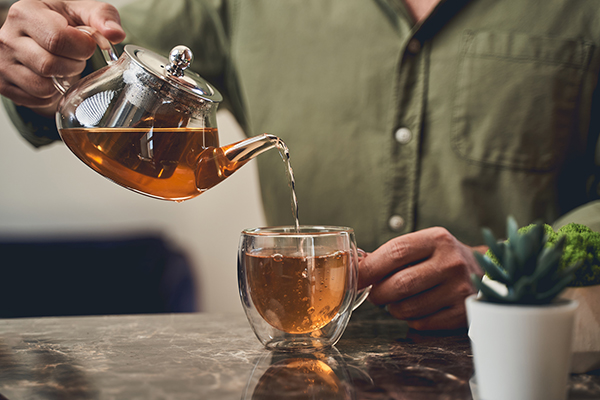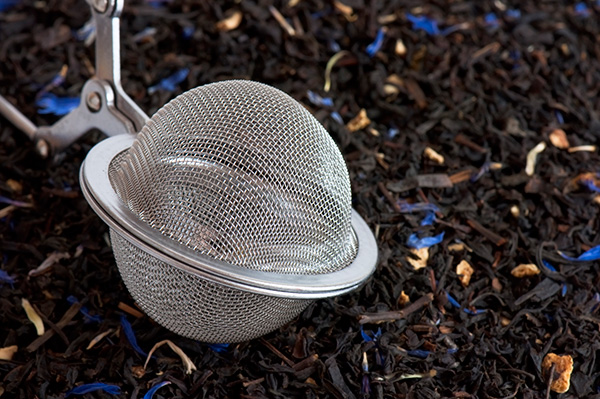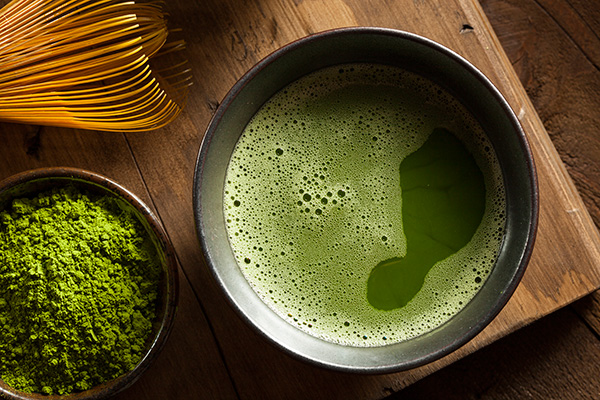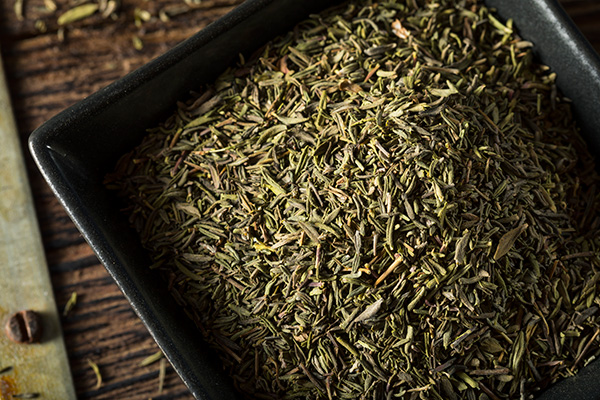How to Brew Loose Leaf Tea
There’s nothing quite like the aroma, flavor, and experience of a freshly brewed cup of loose-leaf tea. If you’re new to the world of loose-leaf tea or looking for ways to improve your brewing technique, you’ve come to the right place. In this comprehensive guide, we’ll walk you through everything you need to know to make the perfect cup of loose-leaf tea.

How to Brew Loose Leaf Tea
Here’s how you can brew loose-leaf tea step-by-step.
1. Gather Your Tools
To get started, you’ll need a few essential tools for brewing loose-leaf tea:
- Loose leaf tea
- Cup, mug, or pot
- Tea infuser (such as a tea ball, basket infuser, or teapot with built-in infuser)
- Electric or stovetop tea kettle (read more about how to use a tea kettle properly)
2. Heat Your Water
Different types of tea require different water temperatures for optimal flavor extraction. To heat your water, use an electric kettle with temperature control or a stovetop kettle and a water thermometer. If you don’t have a thermometer, you can estimate the temperature by watching the water. Small bubbles indicate water around 160-185°F (70-85°C), while a rolling boil indicates water around 200-212°F (93-100°C).
Use the following guidelines for heating your water:
- Black tea: 200-212°F (93-100°C)
- Green tea: 160-185°F (70-85°C)
- White tea: 160-185°F (70-85°C)
- Oolong tea: 185-205°F (85-96°C)
- Pu-erh tea: 200-212°F (93-100°C)
- Herbal tea: 200-212°F (93-100°C)
3. Measure Your Tea Leaves
The amount of tea leaves you use can impact the flavor and strength of your tea. Use a measuring spoon or a digital scale for accuracy. Use the following guidelines for measuring your tea leaves:
- Black tea: 1 teaspoon (2-3 grams) per 8 ounces of water
- Green tea: 1 teaspoon (2-3 grams) per 8 ounces of water
- White tea: 2 teaspoons (4-6 grams) per 8 ounces of water, as white tea leaves tend to be lighter and fluffier
- Oolong tea: 1 teaspoon (2-3 grams) per 8 ounces of water
- Pu-erh tea: 1 teaspoon (2-3 grams) per 8 ounces of water
- Herbal tea: 1-2 teaspoons (2-6 grams) per 8 ounces of water, depending on the density of the herbal blend
4. Steep Your Tea
Steeping time is crucial for extracting the perfect flavor from your tea leaves. Set a timer or keep an eye on the clock to ensure you don’t oversteep your tea. Follow these guidelines for steeping your tea:
- Black tea: 3-5 minutes – Steep for a shorter time for a lighter flavor and longer for a stronger, bolder flavor.
- Green tea: 2-3 minutes – Steeping green tea for too long can taste bitter. Aim for a shorter steeping time for a milder, sweeter flavor.
- White tea: 2-3 minutes – Like green tea, white tea can become bitter if oversteeped. Steep for a shorter time for a delicate, subtle flavor.
- Oolong tea: 3-5 minutes – Oolong teas can vary greatly in flavor and strength, so adjust your steeping time based on your personal preference and the specific tea.
- Pu-erh tea: 3-5 minutes – Pu-erh teas can be quite strong, so start with a shorter steeping time and adjust as needed based on your taste preferences.
- Herbal tea: 5-7 minutes – Herbal teas typically require a longer steeping time to fully extract the flavors from the herbs, flowers, and fruits. Steep for a shorter time for a milder infusion and longer for a stronger, more robust flavor.
5. Remove Your Tea Leaves and Enjoy!
Once your tea has finished steeping, remove the infuser or strain the tea leaves. Now it’s time to sit back, relax, and savor your perfectly brewed cup of loose-leaf tea.
Tea Preparation Chart
| Tea Type | Amount of Tea Leaves | Water Temperature | Steeping Time |
| Black Tea | 1 tsp | 200-212°F | 3-5 min |
| Green Tea | 1 tsp | 160-185°F | 2-3 min |
| White Tea | 2 tsp | 160-185°F | 2-3 min |
| Oolong Tea | 1 tsp | 185-205°F | 3-5 min |
| Pu-erh Tea | 1 tsp | 200-212°F | 3-5 min |
| Herbal Tea | 1-2 tsp | 200-212°F | 5-7 min |
How to Make Loose Leaf Tea Without an Infuser
If you don’t have a tea infuser on hand, you can still enjoy loose-leaf tea by placing the tea leaves directly in your cup or pot and straining them out once the tea has steeped. Alternatively, you can use a French press to make loose-leaf tea. Simply add the tea leaves to the bottom, pour in hot water, and steep for the recommended time before pressing down the plunger to separate the leaves from the liquid.
Final Thoughts
Brewing loose-leaf tea may seem like a complex process, but with the right tools and guidelines, it’s a simple and rewarding experience. Not only does loose-leaf tea provide richer flavors and aromas, but it also offers a more sustainable and eco-friendly alternative to disposable tea bags. So, go ahead and explore the world of loose-leaf tea, and elevate your tea-drinking experience!
FAQ
Can I Use a Tea Ball to Make Loose Leaf Tea?
Yes, a tea ball is a type of infuser that can be used to make loose-leaf tea. Simply fill the tea ball with the appropriate amount of tea leaves, close it securely, and place it in your cup or pot before pouring hot water over it.

Can I Brew Loose Leaf Tea in a Coffee Maker?
While it’s possible to brew loose-leaf tea in a coffee maker, it’s not recommended as it may not provide the optimal brewing conditions for tea, and the flavors of coffee and tea could mix, affecting the taste of your tea.
Can I Cold Brew Loose Leaf Tea?
Yes, you can cold brew loose-leaf tea by steeping the tea leaves in cold water for an extended period, usually 6-12 hours. Cold brewing produces a smoother, less astringent taste and can be enjoyed as a refreshing alternative to hot tea.
Is Loose Leaf Tea Healthier Than Tea Bags?
Loose-leaf tea is often considered healthier than tea bags because it typically contains whole leaves or larger pieces, which can result in a higher concentration of antioxidants, vitamins, and minerals. Additionally, tea bags may contain microplastics and other unwanted materials.
Can You Open a Tea Bag to Make It Loose Leaf?
Yes, you can open a tea bag and use the contents as loose-leaf tea. However, the quality and flavor of the tea may not be as high as that of true loose-leaf tea, as tea bags often contain smaller, broken leaves and dust.
What Happens if You Brew Tea Too Long?
Oversteeping your tea can result in a bitter, astringent taste due to the release of excessive tannins. To avoid oversteeping, always follow the recommended steeping times for each type of tea.
Should You Crush Loose Leaf Tea?
Crushing loose-leaf tea is generally not recommended, as it can release more tannins and create a bitter taste. Instead, use whole or large pieces of tea leaves for the best flavor.
How Many Times Can You Reuse Loose Leaf Tea?
Most loose-leaf teas can be reused 2-3 times, but the flavor will become weaker with each infusion. The number of times a tea can be reused depends on the type of tea and personal preference.






